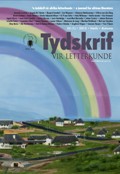Mémoires d’Océans et d’Ailleurs: Traversées interocéaniques
DOI:
https://doi.org/10.4314/tvl.v50i1.7Keywords:
francophone postcolonial literature, Raphaël Confiant, oppositional aesthetics, RaharimananaAbstract
In order to gauge the possibilities of producing a minor literature in French, as defined by Deleuze and Guattari in their groundbreaking work on Kafka, we have confronted two books of contemporary authors who position themselves at the forefront of francophone postcolonial literature: Le Nègre et l’Amiral (1988) by Raphaël Confiant, a writer from Martinique famous for his praise of creolity; and Za (2008) by Jean-Luc Raharimanana, a lesser-known and seemingly more radical writer from Madagascar, based in Paris. They both seem to share a common purpose of representing the population of their respective islands by their particular way of pronouncing the French language: either by creolizing it, as is the case with Confiant, or by pronouncing it with a lisp, as in Za. But these variations of the French language lead to totally opposite aesthetics. Whereas the first attempt is marked by excessive verbal display, the second one seems to function almost by default: a painful scream wrapped in near silence. Indeed, Le Nègre et l’Amiral is dominated by images of verticality and erection, which translates in the cooccurrence of multiple version of the same events, while Za favours the horizontality of bodies and corpses lying down. From within the politico-literary context in which they were published, these works offer two different solutions to the same problem: how to escape the normative tendencies enshrined in a major language such as French, and flee or chase the discourse of the master.
Downloads
References
...
Downloads
Published
Issue
Section
License
Copyright (c) 2013 Tydskrif vir Letterkunde

This work is licensed under a Creative Commons Attribution-ShareAlike 4.0 International License.


 https://orcid.org/0000-0001-6465-6584
https://orcid.org/0000-0001-6465-6584


.png)